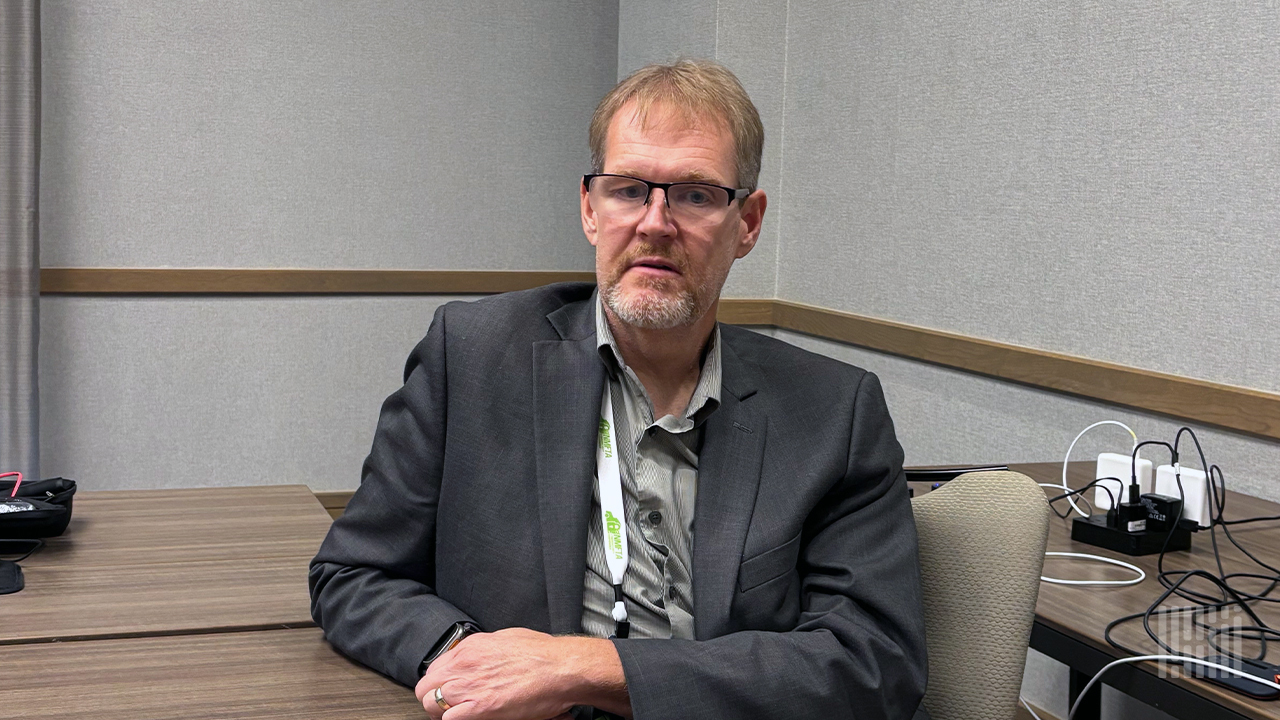Copyright FreightWaves

“All the feedback that we’ve gotten from the classification changes is that they were prepared for the worst, not just the LTL carriers but the shippers and and the brokers,” Ohr said in an interview with FreightWaves on the sidelines of the NMFTA cybersecurity conference. “It was more of a non-event.” Asked what would have constituted “the worst,” Ohr defined it as “none of this makes sense. The shippers don’t know how to classify anything, and all the freight that was being shipped was a debate between the shipper and a carrier about where it was classified, and about how it was classified. It would have been just a constant battle between the shipper and the carrier or even the broker. And so it would just slow down freight.” Shippers knew what they were doing One of the key reasons the transition has gone so well, Ohr said he believes, is that shippers were “more educated than what the carriers expected.” There are thousands of LTL carriers. LTL isn’t a business where you can get in just by buying a few trucks, so a company that’s put down a stake in the LTL arena is likely to have been fully on top of the NMFTA changes. That isn’t always the case with shippers, who can be small and in total far outnumber LTL carriers. Hence the concern that shippers might have been the weak link in the transition to a new classification system. But the LTL carriers are reporting back to NMFTA that “the communication was really good, so the shippers were on top of it,” Ohr said. The most recent overhaul did not seek to change every classification in the NMFTA inventory. Instead, Ohr said, the goal was simplification, primarily driven through the issue of density. Underlying the several-year process was the hope that the amount of freight shipped as Freight All Kinds (FAK), where products that do have NMFC codes are aggregated and shipped under a single tariff, would be reduced through greater specificity in density methodology. Ohr said the NMFTA had not commented on FAK during the process. But in the interview, he described it as “a miscellaneous bucket” that was “more general. So the changes have gotten more specific.” Density is the key Ohr is claiming victory on that front. “A lot of things are going density now, and the shippers are investing in density-based technology,” he said. The density classification described by Ohr sounds relatively simple. “You measure the pallet, you measure the freight, and whether the shipper measures it or the carrier measures it, it’s going to be the same,” he said. The goal of following the guidelines on density and the benefits it brings in LTL shipping is that “you don’t want to pay for air,” Ohr said. Packing to the new density standards would reduce that. “Kudos to the carriers, because the carriers went and talked to the shippers about how they should prepare for the changes,” Ohr said. “Look at your packaging. Are you packing efficiently?” And that gets into issues, Ohr said, like what size pallets they are using and how much space is there between the goods that are being packaged. Moving to the new standards on density would benefit shippers if they followed those guidelines; that was the message Ohr said the carriers were bringing to them. As another sign of shipper interest in the classification changes, Ohr said an online release of a “lookup tool” two months prior to the July launch that laid out the new density rules was expected to get about 3,000 signups. Instead, Ohr said, the number was more than 22,000. “The shippers really used it and the brokers really used it,” Ohr aid. If there was any regret in how the process was handled, Ohr said, it was that the lookup tool didn’t go out earlier given the unexpected interest it encountered. Ask Me Anything…and they did Along that same line of a surprising surge of interest were a series of webinars dubbed “Ask Me Anything.” NMFTA officials involved in the changes would go online, prepared to answer whatever questions might be thrown at them. “We had 500 people sign up the first day, and so we did another one,” Ohr said. “We had another 500 people sign up, and that’s our max.” Ultimately, NMFTA did about a half dozen Ask Me Anything webinars on the classification changes. One unexpected development in the rollout came when FedEx Freight, the LTL arm of the FedEx parent (NYSE: FDX), said it would delay adoption of the new NMFTA classification system for shippers that needed it with a grace period running until December 1. Ohr said despite the fact that the new system had been widely adopted, he did speak to some carriers who said “hey, if a shipper is really trying and they’re struggling, we’re going to give them a little bit of time as long as they’re trying.” The FedEx Freight decision in that regard was not unique. Ohr said the July changes were not “one and done.” “We call it a classification reimagination, and it’s a multi-step process.” The classification shifts in density were the “low hanging fruit,” he said, albeit with 6,000 changes. What is ongoing, Ohr said, is “a real big research project” that will take another year or two to complete. The issues being studied are numerous, he said, such as “if you have multiple things on a pallet, how does that get classified?” Ohr also cited the need to study classification of hazardous materials as another area of research that is ongoing. NMFTA staff that was devoted to the density changes and the ongoing research project for whatever changes come next totals about a dozen, Ohr said. One thing NMFTA does not get into is pricing. The classifications and density guidelines are there; it is up to the carriers and shippers to come to an agreement on how to price them, according to Ohr. More articles by John Kingston Factoring companies squeezed by slowing shipper payments: Alsobrooks DAT execs in two forums discuss how it seeks to reshape the freight sector



